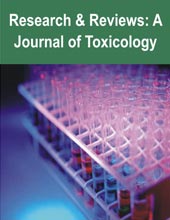
Gyanendra Gupta,

Gagan Devi,
Abstract
In the contemporary era characterized by a swift and cutthroat environment, numerous gynecological issues are on the rise owing to sedentary lifestyles, improper dietary patterns, and other factors. The interaction between physical and mental health significantly affects the menstrual cycle. According to data, a staggering 80% of women grappling with irregular menstrual cycles find themselves in the grips of Oligomenorrhea, constituting 19.3% of this demographic. In today’s fast-paced and competitive society, there is a notable surge in gynecological conditions attributable to sedentary lifestyles and poor dietary choices, among other factors. The intricate relationship between physical and mental well-being greatly influences the regularity of the menstrual cycle. statistics highlight a concerning trend: a substantial portion, 80%, of women experiencing irregular menstrual patterns are diagnosed with Oligomenorrhea, representing 19.3% of this afflicted population. In the contemporary world, marked by rapidity and competition, numerous gynecological ailments are burgeoning due to sedentary living and unhealthy eating practices. The synergy between physical and mental health significantly impacts the menstrual cycle’s regularity. Recent data indicates a concerning prevalence: among women facing irregular menstrual cycles, a significant 80% are diagnosed with Oligomenorrhea, comprising 19.3% of this demographic.
Keywords: Gynecological, Menstrual cycle, Oligomenorrhea, Sedentary life style and Statistics.
[This article belongs to Research & Reviews: A Journal of Toxicology(rrjot)]
References
- C Dutta, Textbook of Gynecology, Edition 1994 Central Publication P.P
- Sudha Salhan, Textbook of Gynecology, Edition 2011, JP Brothers Medical Publishers.
- Zusthi Rathoer Sharma, Hormones in obstetrics and Gynecology Edition 2000, JP Publication.
- Bhattacharya’s infertility in Dewhurts textbook of obstetric & Gynaecology by D.Keith Edmonds 7th edi.2007
- Clinical Gynecologic Endocrinology and Infertility,(part I &II);7th edition, by Leon Speroff et.al; published by Jaypee Brothers, 2005.
- Cooper TG., Noonan E, Non Eckardste in et al.world Health Organization reference values for human semen Characteristics Human Reprod.2010
- Goyal, R. K. and Hirano, 1 (1996) : Enteric Nervous System-A Review, New England Journal of Medicine, April, 25, 1998.
- Shaw’s Textbook of Gynaecology edited by VG Padubidri, Shirish N Daftary, published by Elsevier, 14th edition 2008.
- The Infertility Manual edited by Kamini A Rao, published by Jaypee brothers, 2nd edition-2004.
- Jeffocoate’s Principles of Gynaecology; 7th international edition, by Pratap kumar and Narendra Malhotra; published by Jaypee Brothers, 2000

Research & Reviews: A Journal of Toxicology
| Volume | 14 |
| Issue | 02 |
| Received | March 26, 2024 |
| Accepted | April 6, 2024 |
| Published | July 20, 2024 |

